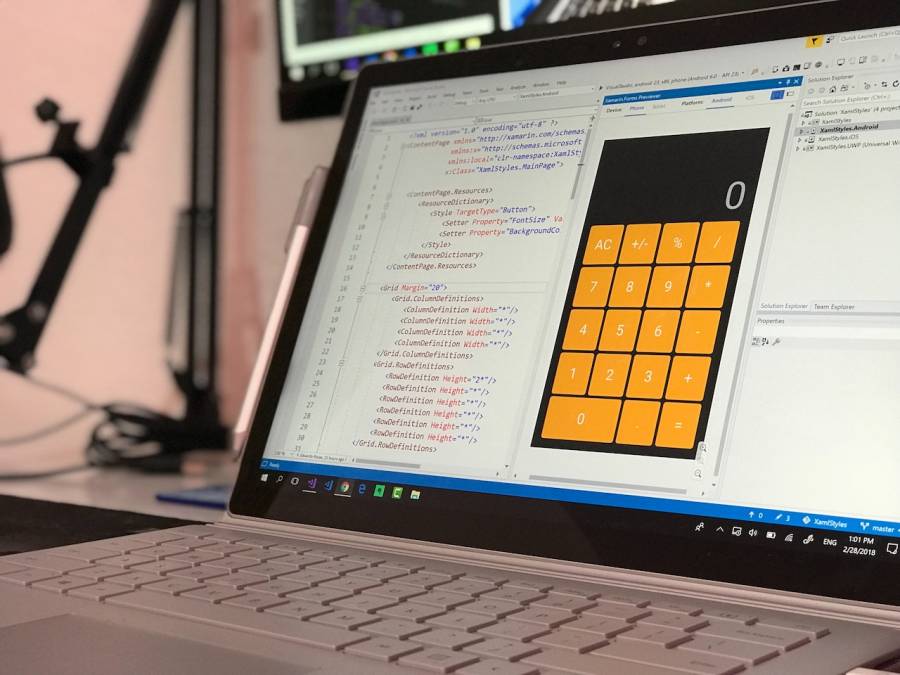Mobile App Localization is a game-changer, folks. Yet when it’s time to globalize their app, many developers hit a wall. The challenge? Mobile App Localization.
Most developers lack knowledge of how to approach mobile app localization. This very hurdle separates the small-time developer from the global player. If you’re unsure about localizing your app effectively, reaching this level seems like an uphill battle.
Navigating localization isn’t easy; trust me on that one!
I recently spoke with a promising developer who tried his hand at localization…only for users in Spain to uninstall his app because they found specific phrases offensive due to incorrect translation.
This experience has made him hesitant about attempting localization again. He worries that his user base may remain confined to countries where English is spoken.
No surprise there.
What is Mobile App Localization?
In mobile app development, a term frequently used is ‘mobile app localization.’ But what does it mean? Mobile app localization refers to adapting applications in different regions and languages. It’s not just about translating text; it involves considering cultural nuances such as symbols, colors, and images.
This process can significantly enhance the user experience (UX), increase engagement rates, and boost downloads from Google Play Store and Apple App Store by improving app store page visibility through keyword localization efforts on these platforms’ search engines.
The Intricacies of Localizing Mobile Apps
Localizing your mobile apps goes beyond mere language translation – many factors are at play here. One key aspect includes understanding how date formats vary around the globe: some countries follow the day/month/year format, while others prefer the month/day/year format.
- Cultural adaptation involves changing UI/UX elements based on reading direction or replacing imagery/icons with culturally appropriate ones.
- Linguistic Adaptation: Resource files containing translation keys must be converted into translated strings according to local regulations & customs.
A Glimpse Into The Process Of Mobile Application Localization
To ensure successful full-app-localization, you must first devise a comprehensive plan outlining every phase of this project:
- Determining target languages & regions,
- Analyzing strategies local competitors use before finally starting translations resource file(s).
Your goal should consistently be delivering localized experiences without compromising performance speed, which often requires using tools like ‘Mobile SDK‘ for managing language assets efficiently, allowing easy swapping between translations depending upon users’ preferences/settings, thereby providing a truly localized experience irrespective of the device model/version used by end-users.
Lastly, quality assurance testing ensures no bugs/errors exist post-translation. It results in a flawless UX regardless of the location/language chosen, thus maximizing potential returns from the minimum viable localization effort invested initially during the development stage.
Benefits of Mobile App Localization
The mobile app localization process is a powerful strategy for businesses seeking to extend their reach and engagement. This technique not only makes your app accessible to a broader audience but also offers several other benefits.
Increased App Visibility and Downloads
A localized app can significantly boost its visibility on the Apple App Store and the Google Play Store. Translating your app store content into multiple languages opens up new markets where users are more likely to download an application in their native language.
This enhanced visibility directly leads to increased downloads. Research has demonstrated that apps supporting multiple languages get downloaded substantially more than those not.
Better User Experience (UX)
User experience lies at the core of any successful mobile application, with localizing your app playing a crucial role here. When users interact with an application in their native language, they feel more comfortable navigating through it, and understanding its features better, ultimately leading them to become loyal customers.
In addition, localization efforts should also consider cultural nuances beyond just text translation – including elements like date formats or currency symbols – ensuring the user feels truly catered for within their environment.
Compliance with Local Regulations
In certain regions worldwide, strict regulations about digital content are made available in local languages. Therefore, localizing your mobile apps to target these rules can help avoid legal complications while increasing trust among your app users, who appreciate seeing familiar assets used throughout the interface.
Growth Opportunities & Competitive Advantage
A well-executed full-app localization strategy gives companies access to international markets they might otherwise struggle to reach due to linguistic barriers. These untapped audiences represent significant growth opportunities for businesses willing to invest time and resources in continuous localization and creating experiences across all platforms, including Android and iOS devices.
Another benefit is gaining a competitive advantage over rivals who may not have taken steps towards such initiatives, providing a unique selling point to differentiate yourself from the competition and boosting the overall brand image perception among the global consumer base.
Testing & Quality Assurance for Mobile App Localization
Maintaining quality standards in your localized iOS app localization or your Android app localization can seem daunting, but with the right approach and tools at hand, it’s absolutely manageable. Here are some crucial steps to ensure your mobile application localization meets all the proper app store localization criteria.
Test Across Multiple Languages
The first step is testing across multiple languages. This means translating content into different target market languages and checking how well these translations work within the context of your app UI.
You must ensure translated strings fit nicely within buttons or menu items without breaking the layout or causing confusion among native speakers. IBM suggests using automated testing tools which support multiple languages as an efficient way of achieving this goal.
Check Compatibility on Different Devices
Your localized experience should be equally enjoyable regardless if users access it from an Android phone, a tablet, an iPhone, or a desktop computer. This requires thorough compatibility checks on various devices and operating systems.
Android Developers Guide, for instance, recommends creating alternative resource files explicitly tailored for specific screen sizes or orientations.
- Create device-specific layouts – Your app interface might look great on one device, but what about others? Ensure you have optimized designs ready for all possible screens.
- Prioritize popular models – While aiming at universal accessibility, focusing more resources on each region’s most commonly used devices is practical. You can get insights from Google Play Store analytics.
- Aim high and low – Don’t forget about older OS versions. They still hold a significant user base, especially outside developed markets. So while leveraging the latest features, test backward compatibility as well.
Don’t Neglect Local Regulations Compliance
Finally, no matter how perfect language assets may appear, the last thing you want is to get pulled out from the App Store due to non-compliance issues. Remember, GDPR, COPPA, etc.; all apply here just like they do elsewhere.
Tools for Mobile App Localization
The complexity of mobile app localization demands various tools to effectively translate content, manage translations, and ensure consistency across multiple languages. The following are essential tools to aid the full and seamless mobile app localization process.
Translation Management Systems (TMS)
A Translation Management System (TMS) is a powerful resource for organizing and optimizing the translation process. It allows you to centralize your language assets, such as resource files and translated strings, making them easily accessible to all team members involved in the project.
TMS also facilitates collaboration between translators, app developers, and other stakeholders by providing features like workflow management and real-time updates on translation progress. Some popular TMS include Transifex or Crowdin, which have been instrumental in numerous successful localizing mobile app efforts.
Machine Translation Services
Solutions like Google Translate API or Microsoft Translator Text API provide instant automated translations into numerous target languages. While they may not always deliver perfect results due to nuances in native language expressions, these services serve as a good starting point before fine-tuning with human translators who are native speakers themselves.
Besides translating text from one language to another, these APIs offer additional functionalities such as detecting source language or integrating with existing apps via SDKs, thus adding value towards achieving minimum viable localization.
User Experience Testing Tools
To ensure a localized experience resonates well with users, it’s important to not just focus on text but also test user interface elements, layout, cultural appropriateness, etc. Using User Experience testing platforms allows you to observe how users interact and navigate through the app, thereby revealing potential issues and improving overall usability. This is where solutions like Lookback.io come in handy.
Cultural Consultation Services
Certain aspects might require a deeper understanding of specific contexts beyond mere translation. For this, consulting agencies specialize in helping businesses adapt their products to different cultures. They provide strategic advice based on comprehensive research about the world’s various societies, proving beneficial when tackling complex tasks and ensuring a smooth transition toward a global audience.
App Store Optimization (ASO) Tools
A crucial part of an effective localization strategy is ensuring visibility in both the Apple and Google Play stores. ASO includes achieving higher rankings by optimizing your keywords, descriptions, screenshots, reviews, etc., which is vital.
Several tools, including Sensor Tower and Mobile Action, are available in the market that helps track performance, competitor analysis, keyword optimization, and more. Ultimately, the aim is to make your app discoverable to relevant audiences, thus driving downloads and increasing reach.
Handling large volumes, especially dynamic ones, becomes more straightforward with Drupal, WordPress, and Joomla systems. CMSs enable you to create, edit, and publish content in diverse formats. Furthermore, many built-in plugins support the ease of transition towards supporting multiple languages, facilitating a smoother journey for end-users every step of the way.
Testing & Quality Assurance for Mobile App Localization
To succeed in the rapidly evolving mobile app development arena, an app localization tool is necessary for companies wishing to expand their reach internationally. But how can you ensure that your localized app meets quality standards? The answer lies in comprehensive testing across multiple languages and devices.
The Power of Localization Testing
Localization testing acts like a safety net, catching errors or oversights during translation. It’s about more than checking translations – verifying user interface (UI) elements, ensuring cultural appropriateness, and ensuring language switching works seamlessly.
Pillars of Effective Localization Testing
A successful localization test hinges on several factors:
- User Interface: Ensuring translated text fits within UI components without disrupting layout or design aesthetics.
- Languages: Confirming accurate support for multiple languages and seamless transition between them based on device settings.
- Cultural Sensitivity: Evaluating content against local customs, values, and norms to avoid causing offense or misunderstanding among target users.
Hurdles in the Localization Testing Journey
- Different character sets may cause display issues due to operating system compatibility variances or screen resolution differences, especially when comparing Android devices with Apple products.
- Misinterpretation from direct word-to-word translations could distort the intended message conveyed by your app content, resulting in confusion among end-users.
A popular translation management platform offers features such as glossaries, which maintain consistency across translations, a history log tracking changes over time, and integration into agile workflows.
By incorporating rigorous quality assurance measures throughout your project, you increase chances for success and build stronger relationships by effectively providing truly global products catering to diverse global market audience needs.
FAQs: Mobile App Localization: Best Practices and Tools
How do I localize a mobile app?
To localize an app, you must translate its content into different languages, adapt it for cultural differences, and optimize the user interface for various markets.
What is mobile localization?
Mobile localization involves adapting a mobile application to meet different global target markets’ local language and cultural requirements.
How do I internationalize an app?
You can internationalize an app by designing it with global audiences in mind from inception. This includes a localization platform using locale-neutral data formats and preparing your codebase for translation.
What is a locale in mobile app development?
A ‘locale’ refers to a device’s geographic or linguistic region settings that influence how information is presented within applications. It includes aspects like language, date format, currency, etc.
Key Takeaways
Mobile app localization is a game-changer. It’s your app-localized passport to global markets.
You’ve learned the ins and outs of it, from understanding its essence to reaping its benefits.
The best practices we discussed? They’re your roadmap for success in this journey.
Cultural considerations, language nuances, user experience optimization – they all matter—a lot.
And those tools we talked about? Your allies in navigating the complex terrain of localization.
Translation management systems, machine translation services, content management systems – they’re here to make things easier for you.
We also touched on testing and quality assurance. Remember them as your last defense against possible missteps or oversights during the localization app translation process.
Mobile App Localization is no longer an option; expanding reach and engagement globally is necessary.
At TechAhead, we are award-winning mobile app developers and the #1 company for all your web apps, app store optimization, and a solid mobile app localization strategy.
Featured Image Credit: Photo by Eduardo Rosas; Pexels; Thank you!

















